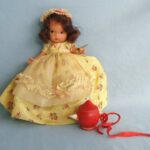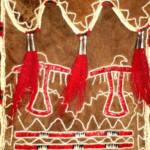Thomas Alva Edison was born on February 11th, 1847 in Milan, Ohio, to Sam Edison, Jr. and Nancy Elliot Edison. Called “Al” when he was younger, he was the youngest of seven children, of which only four lived to adulthood.
In 1854, Sam Edison and his family moved to Port Huron, Michigan, where he began work as a carpenter for the Fort Gratiot military post. Thomas started school in Port Huron, but due to bad hearing he had a hard time understanding the lessons, and rarely attended. After three month at, his enraged mother pulled him out of school, when teachers said that he was confused and bewildered.
Nancy schooled Thomas at home were he became a very eager reader, and showed great interest in mechanical things and chemical experiments. He learned much of his education from reading R.G. Parker’s School of Natural Philosophy. At the age of ten he set up a chemistry lab in his families basement.
In 1859, at the age of twelve Thomas began working as a train boy on the Grand Trunk Railway, selling candy and newspapers. He moved his lab from the basement of his house, the baggage car. Thomas also started printing a weekly newspaper, that he called the Grand Trunk Herald. After an accidental fire, he was forced to shut down his baggage car laboratory.
During this time, Thomas last most of his hearing. As a child he had a fight with scarlet fever, and many untreated ear infections. It is claimed that part of the reason for his hearing loss is because a conductor boxed his ears after his fire in the baggage car. Later Thomas said, the injury happened when a conductor lifted him by his ears, while helping him onto a moving train.
Thomas did not let his hearing disability get him down, and treated it as a good thing, he could concentrate better on his experiments and research. His deafness did, however, make him shy when interacting with other people.
In 1862, three year old Jimmie MacKenzi has fallen onto the track, and was about to get hit. Thomas saved little Jimmie, and out of gratitude, his father station agent J.U. MacKenzi taught Thomas how to use the telegraph. Thomas took a job as a telegraph operator in Port Huron that winter, while he continued his experiments on the side.
Thomas’s first job away from Port Huron was at Stratford Junction, Ontario on the Grand Trunk Railway. He worked as a moving telegrapher in the Midwest, South, Canada and New England between the years 1862 to 1868. During this time he worked on a device that would allow you to transmit messages automatically.
Thomas moved to Boston in 1868, and worked in the Western Union office and continued to work on his inventions. Within a year his inventions, the message printer and duplex telegraph, were progressing quit well.
In 1869, Thomas quit work as a telegrapher and started working full time on his inventions. His first invention to get a patent, was for his electric vote recorder, (U.S. Patent 90,646), was granted on the first of June, 1869.
In the middle of 1869, Thomas moved to New York City. Franklin Leonard Pope, Thomas’s mentor, friend and fellow telegrapher and inventor, allowed Thomas to work on his inventions and live in a room, at Samuel Laws’ Gold Indicator, where he worked.
In October of 1869, Thomas, Pope and James Ashley formed the organization Pope, Edison and Co. Thomas, during this time received many patents for improvements to the telegraph.
In 1870, the partnership merged with the Gold and Stock Telegraph Co., Thomas established the Newark Telegraph Works, with William Unger. He formed the American Telegraph Works and in 1874 he started to work on a multiplex system for Western Union, were instead he developed a quadruplex telegraph, that could send two messages at the same time in both directions. Other than just inventing telegraph inventions, in 1875 Thomas invented an electric pen.
During this time, there were many changes in his personal life. In 1871, his mother Nancy died. Christmas day of that same year, he was married to sixteen year old, Mary Stilwell, a former employee. Their marriage was stressed, mainly because of Thomas working all the time, and her constant illnesses.
On February 1873 their first child, Marion Estelle, nicknamed “Dot”, was born. In January 1876, Thomas Jr., nicknamed “Dash”, was born and in October of 1878 William Leslie was born.
In 1875, Thomas began having financial problems, and asked his father to help him build a new machine shop and laboratory in Menlo Park, New Jersey. In March of 1876 Thomas and his two associates, Charles Batchelor and john Kruesi, moved into the new building.
In 1877 Thomas invented the carbon button transmitter, That made it so that voices were at a higher volume and more clear over the telephone lines. This is still used today. In December of that same year, Thomas revealed the tinfoil phonograph and became known as “The Wizard of Menlo Park.” The market the machine, The Edison Speaking Phonograph Company was established in 1878. The popularity of this invention wore off and Thomas began to focus elsewhere.
With financial backing from J.P. Morgan and the Vanderbilts, Thomas was able to open the Edison Electric Light Company, on November 15, 1878. The company focused on experiments with electric light, and to be able to have control over any patents that resulted from them. After handing over his patents to the company, Thomas received a large share of stock.
In 1879, the lab was able to create an incandescent electric light bulb, which Thomas publicly demonstrated. The lab was also able to build an entire electrical lighting system that would be able to light a city. Many people traveled to Manlo Park to see the new discoveries, and on New Years Eve a special public exhibition at the lab was given.
In 1881, Thomas established a factory in East Newark. The following year he moved his family to New York and set up a lob there as well.
The first commercial electric light system was installed in 1882, on Pearl Street in lower Manhattan. The process was supervised by Thomas. At first only four hundred lamps were lit, then just a year later, there were 10,300 lamps being used by 513 customers.
Several companies were developed to manufacture and operate the equipment needed for the lighting system. There was the Edison Electric Illuminating Company in New York, the Edison Machine Works, the Edison Electric Tube Company and the Edison Lamp Works.
The system was also taken over seas to the Paris Lighting Exposition in 1881, the Crystal Palace in London in 1882, and the coronation of the czar in Moscow. It also led the the development of lighting companies in many of the European countries.
William J.Hammer, one of Thomas’s engineers, made a discovery in 1883, that eventually led to the electron tube. This discovery was patented the “Edison Effect.”
On August 9th, 1884, Thomas’s wife, Mary passed away, from what is believed to be a Brain tumor. She left Thomas with three young children to raise. Almost two years later on February 24th, 1886, Thomas, then thirty-nine, married Mina Miller in Akron, Ohio.
Thomas moved his family into a large mansion named Glenmont in West Orange, New Jersey. He and Mina had three children of their own. Madeleine was born in 1888, Charles in 1890 and Theodore Miller Edison in 1898. Thomas’s children from his first wife, felt distant from their father and his new lifestyle.
Thomas built a new laboratory in West Orange, New Jersey in 1887. This new lab had a machine shop, ancillary buildings for metallurgy, chemistry, woodworking and galvanometer testing, as well as phonograph and photograph departments and a library. During this year Thomas also continued his work on the phonograph.
Thomas was also interested in a process of ore milling that would remove different metals from ore. He developed the Edison Ore-Milling Co., in 1881, however their was no market for it, and the efforts wasted. He returned to the idea in 1887, and in 1889 the New Jersey and Pennsylvania Concentrating Works was organized.
Thomas got wrapped up in the project and was spending a lot of time away from home at the mines. Again after much money and time invested the projects went south again when the market went down and a new sources of ore in the Midwest were found.
In 1896 Thomas set up the National American Phonograph Co. This company was built so that phonographs for home amusement, could be made.
Along with his many other projects, Thomas got involved with promoting the use of cement and in 1899, he formed the Edison Portland Cement Co. Thomas tried to get people to see that cement could be used in the construction of low cost homes, and in the manufacturing of other items. However, his ideas were to drastic at the time.
Over the next few years Thomas made adjustments, and changes to the phonograph, as well as to the cylinders, that were played on them. The early cylinders were made of wax, and in 1912 he introduced a cylinder record that was unbreakable. This was named the Blue Amberol. It was also during this time that Thomas started in the market of disk phonographs.
The Edison disc was created to only be able to be played on his phonographs, with the cuts being lateral instead of vertical. Then roaring twenties can around and radio started to cause business to slow down. In 1929, the Edison disk business, stopped production.
In 1911, all of Thomas’s companies were organized into one, Thomas A. Edison, Inc. Thomas still had some authority, but he became less and less involved in the running of daily business.
In 1913, during World War I, Thomas became head of the Naval Consulting Board. During this time he did naval research, mostly having to do with submarine detection, but the Navy disregarded or were not open to many of his suggestions and ideas. During this time he made the first talking moving picture.
Thomas’s health started getting worse in the 1920s, and he began spending much of his time at home. His son Charles was president of Thomas A. Edison, Inc, although he was rather distant from all his children.
In Greenfield Village, Michigan, a friend and admirer of Thomas, reconstructed Thomas’s invention factory as a museum. The museum opened in 1929, the 50th anniversary of Thoma’s electric light. Thomas was unable to stay for the main celebration for Light’s Golden Jubilee, because of his failing health.
Over the next two years Thomas’s health continued to decline, as he was struck with a series of ailments. On October 14, 1931, he lapsed into a comas, and passed away a few days later on October 18, 1931, at his Glenmont mansion in Llewellyn Park in West Orange, New Jersey.
Thomas’s final words to his wife were, “It is very beautiful over there.”
sources:
http://www.incwell.com
http://www.wikipedia.com
http://inventors.about.com




